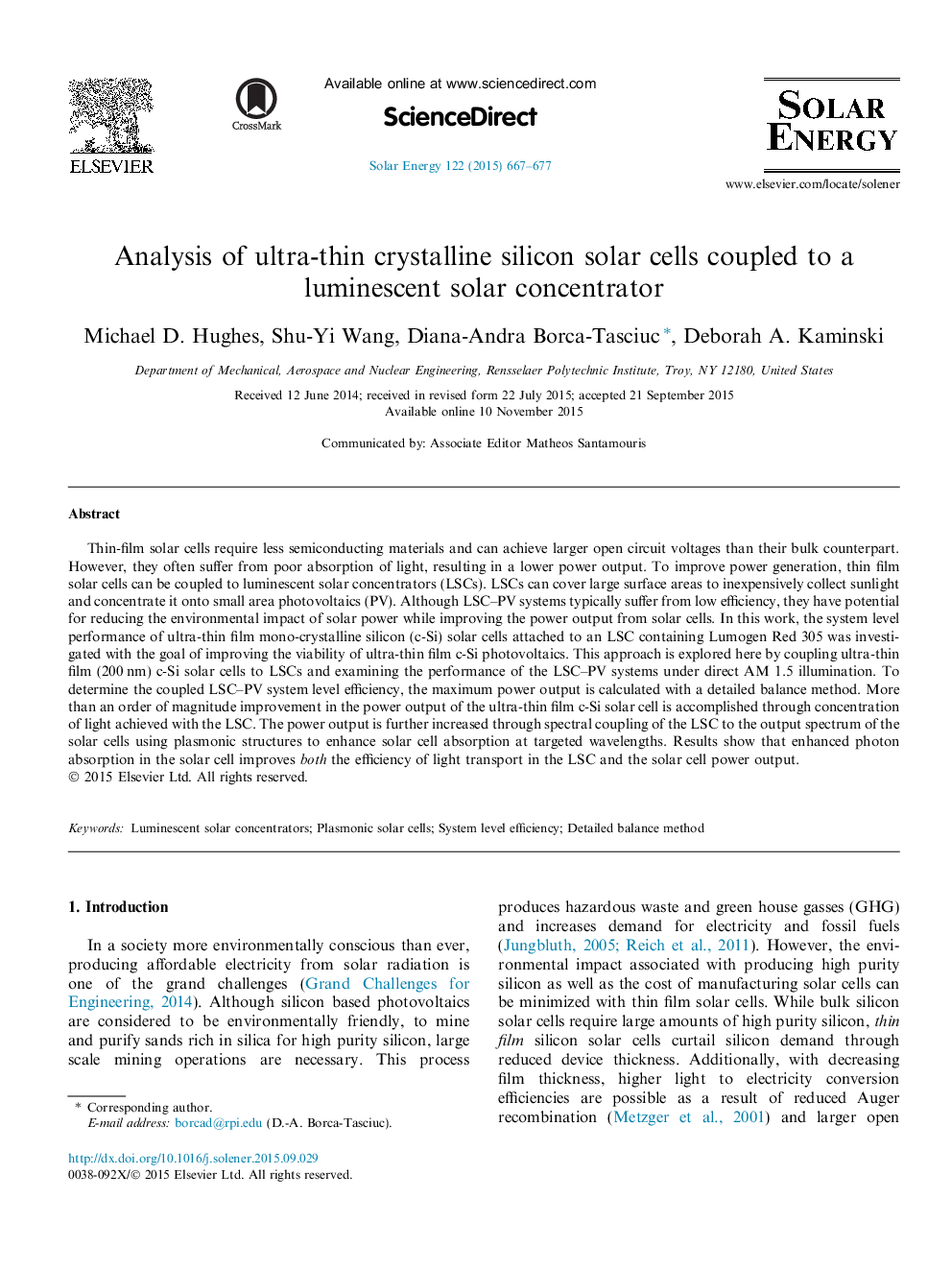| Article ID | Journal | Published Year | Pages | File Type |
|---|---|---|---|---|
| 1549617 | Solar Energy | 2015 | 11 Pages |
•LSCs coupled to ultra-thin film c-Si solar cells are theoretically investigated.•The Monte Carlo method is used to model light transport in the LSC.•The detailed balance method is used to find the overall LSC–PV system efficiency.•Plasmonic structures are used to enhance the spectrally coupling of LSC–PV system.•An overall LSC–PV system efficiency of 3.8% is achieved.
Thin-film solar cells require less semiconducting materials and can achieve larger open circuit voltages than their bulk counterpart. However, they often suffer from poor absorption of light, resulting in a lower power output. To improve power generation, thin film solar cells can be coupled to luminescent solar concentrators (LSCs). LSCs can cover large surface areas to inexpensively collect sunlight and concentrate it onto small area photovoltaics (PV). Although LSC–PV systems typically suffer from low efficiency, they have potential for reducing the environmental impact of solar power while improving the power output from solar cells. In this work, the system level performance of ultra-thin film mono-crystalline silicon (c-Si) solar cells attached to an LSC containing Lumogen Red 305 was investigated with the goal of improving the viability of ultra-thin film c-Si photovoltaics. This approach is explored here by coupling ultra-thin film (200 nm) c-Si solar cells to LSCs and examining the performance of the LSC–PV systems under direct AM 1.5 illumination. To determine the coupled LSC–PV system level efficiency, the maximum power output is calculated with a detailed balance method. More than an order of magnitude improvement in the power output of the ultra-thin film c-Si solar cell is accomplished through concentration of light achieved with the LSC. The power output is further increased through spectral coupling of the LSC to the output spectrum of the solar cells using plasmonic structures to enhance solar cell absorption at targeted wavelengths. Results show that enhanced photon absorption in the solar cell improves both the efficiency of light transport in the LSC and the solar cell power output.
